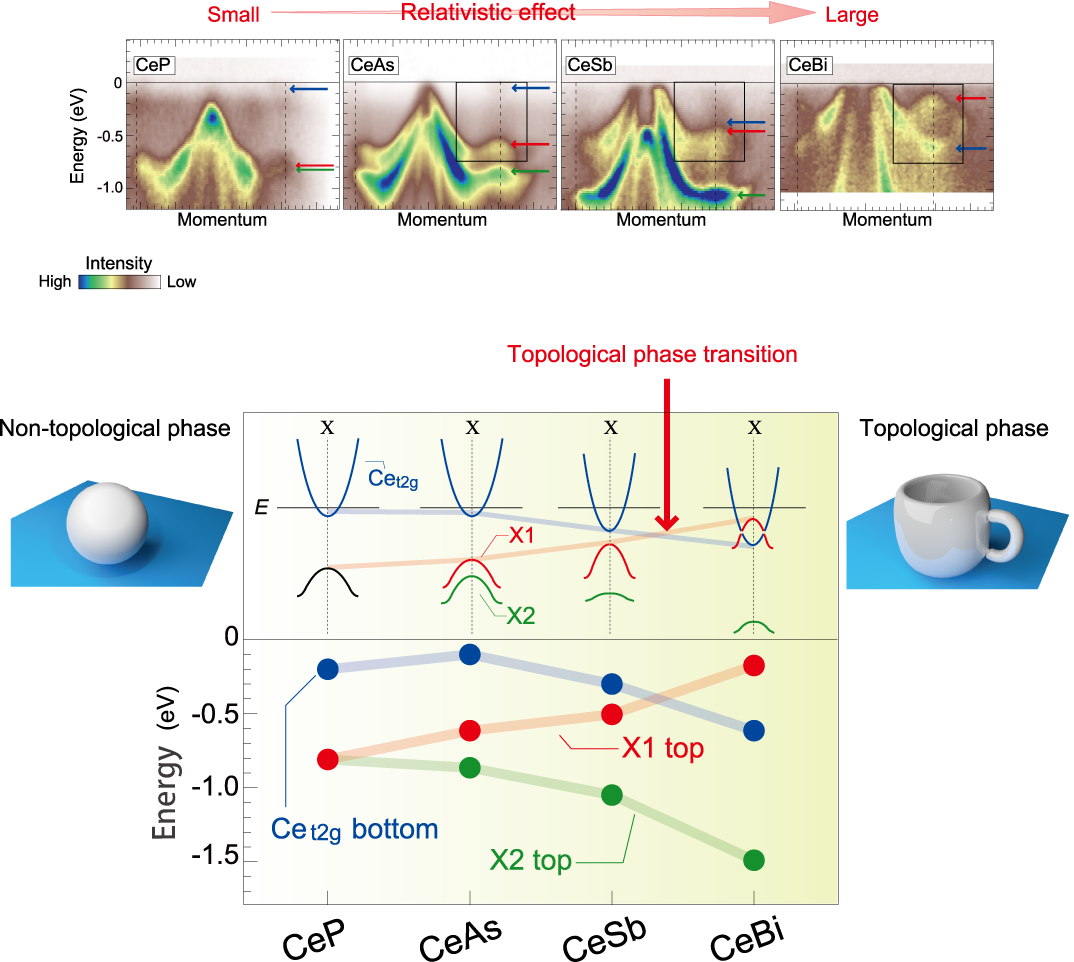Direct observation of topology hidden inside materials – Judging topological nature of materials by its inside materials is more important than what you see it by appearance –
The University of Tokyo
Osaka University
National Institute for Materials Science
Direct observation of topology hidden inside materials
Japan Atomic Energy Agency
RIKEN
Overview:
Topology hidden inside materials in the matter group called cerium monopnictides has been determined for the first time in the world. This result was achieved by the research group of Assistant Professor Kenta Kuroda and Associate Professor Takeshi Kondo of the Institute for Solid State Physics, the University of Tokyo (Director Masashi Takigawa), in collaboration with Team Leader Ryotaro Arita (RIKEN Center for Emergent Matter Science), Assistant Professor Masayuki Ochi (the Graduate School of Science, Osaka University), Senior Scientist Takayuki Muro (Japan Synchrotron Radiation Research Institute), Deputy Director-General Hideyuki Kitazawa (National Institute for Materials Science) and Principle Researcher Yoshinori Haga (Japan Atomic Energy Agency).

The topological electronic phase distinguished by the latent topology inside materials is an award-winning subject of the Nobel Prize in Physics 2016, and research on which subject has now being explosively conducted all over the world. In the topological electronic phase, an electronic state peculiar to the topological electronic phase occurs at surface of materials (appearance), reflecting topology hidden inside materials (substances). For this reason, topology of a substance has been judged only by its apparent appearance.
The research group succeeded in observing the topological phase transition in which the material changes to the topological electronic phase by using soft X-ray, a light suitable for determining topology of materials by its substances rather than by its apparent appearance. Since the research achievement enables direct determination of the essential topology hidden inside materials without judging at surface of materials, it is expected that employing this technique will lead to discovery of more diverse topological electronic phase.
This research paper will be published in February 21, 2018 edition (EST, U.S.) in Physical Review Letters online.
Reference:
- Journal: Physical Review Letters
- Title: Experimental determination of topological phase diagram in Cerium monopnictides
- Author:Kenta Kuroda*, M. Ochi, H. S. Suzuki, M. Hirayama, M. Nakayama, R. Noguchi, C. Bareille, S. Akebi, S. Kunisada, T. Muro, M. D. Watson, H. Kitazawa, Y. Haga, T. K. Kim, M. Hoesch, S. Shin, R. Arita, and Takeshi Kondo (* Corresponding author )(On February 28th, added the author name)
- DOI:https://doi.org/10.1103/PhysRevLett.120.086402
- Abstract:https://journals.aps.org/prl/accepted/fb073Y60Tdb1c16459562a6667cf99e055187680a
